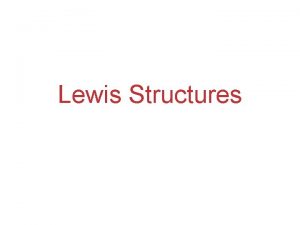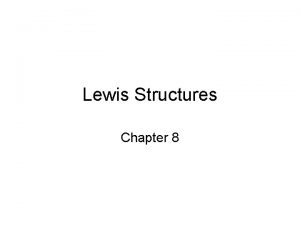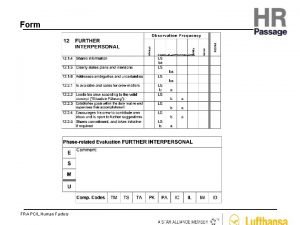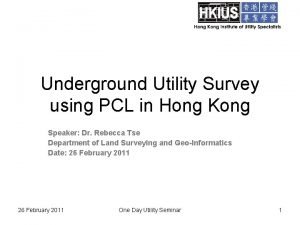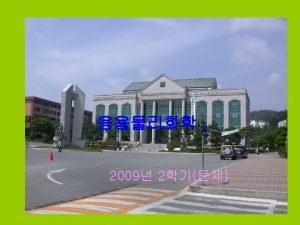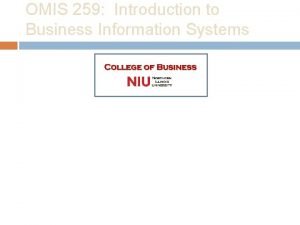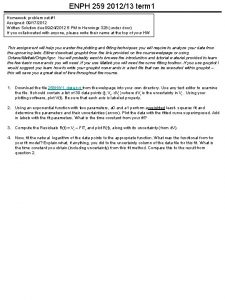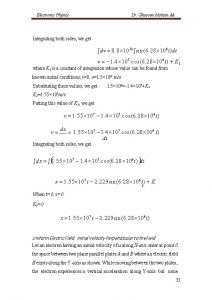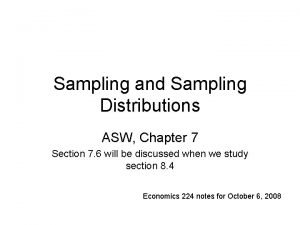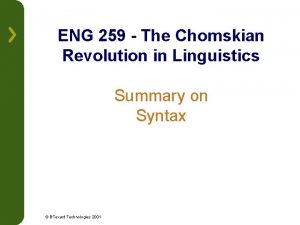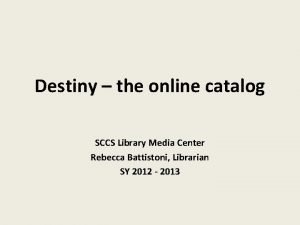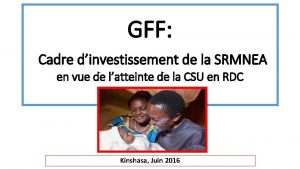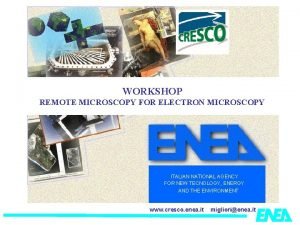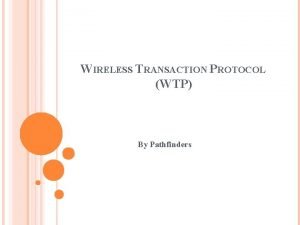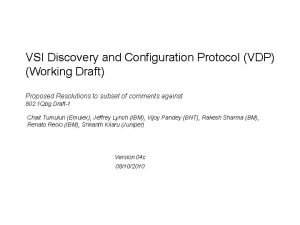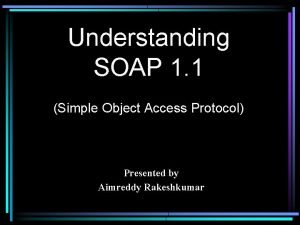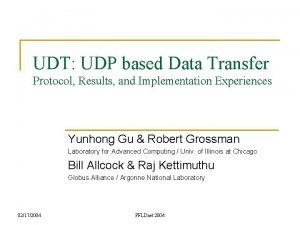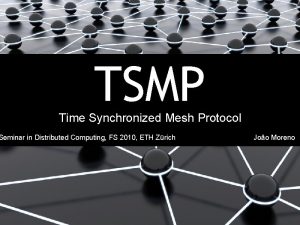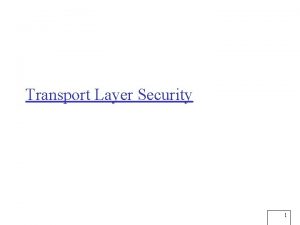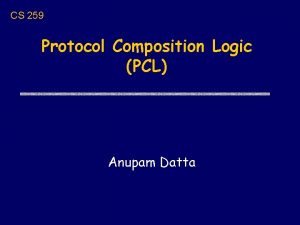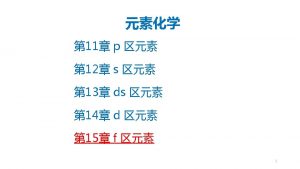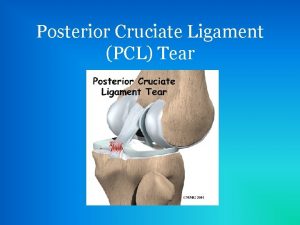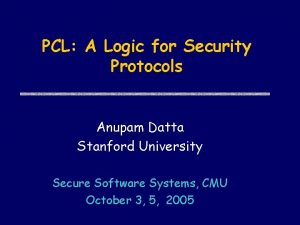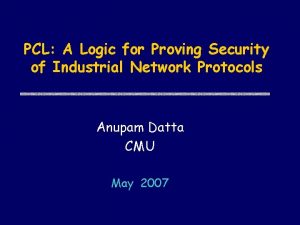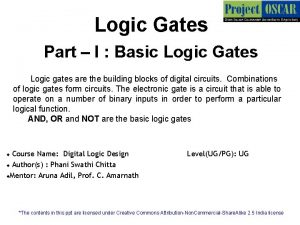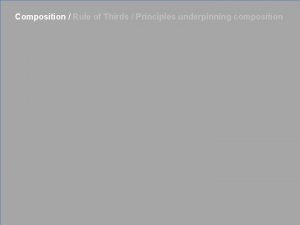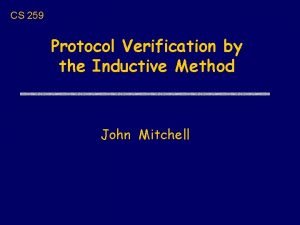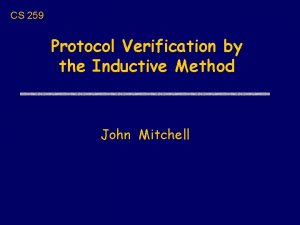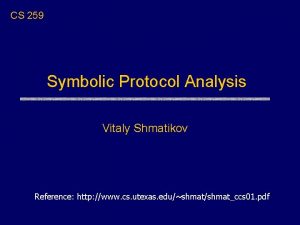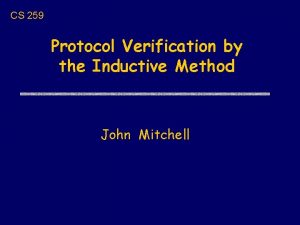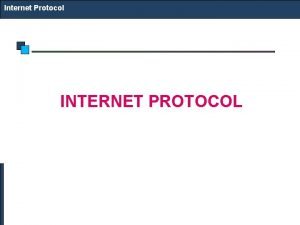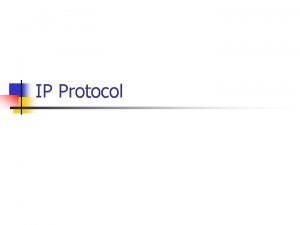CS 259 Protocol Composition Logic PCL Part II



















![Diffie-Hellman: Property u. Formula utrue [ new a ] A Fresh(A, ga) Diffie-Hellman: Property u. Formula utrue [ new a ] A Fresh(A, ga)](https://slidetodoc.com/presentation_image_h/9a846fa0b9ce31d4a79e5342ba269695/image-20.jpg)

![Sequencing Rule [S]P [ T ] P [ ST ] P u. Is this Sequencing Rule [S]P [ T ] P [ ST ] P u. Is this](https://slidetodoc.com/presentation_image_h/9a846fa0b9ce31d4a79e5342ba269695/image-22.jpg)




![Two worlds Symbolic model [NS 78, DY 84, …] Complexity-theoretic model [GM 84, …] Two worlds Symbolic model [NS 78, DY 84, …] Complexity-theoretic model [GM 84, …]](https://slidetodoc.com/presentation_image_h/9a846fa0b9ce31d4a79e5342ba269695/image-27.jpg)









![Inductive Semantics u [[ 1 2]] (T, D, ) = [[ 1]] (T, D, Inductive Semantics u [[ 1 2]] (T, D, ) = [[ 1]] (T, D,](https://slidetodoc.com/presentation_image_h/9a846fa0b9ce31d4a79e5342ba269695/image-37.jpg)




- Slides: 41

CS 259 Protocol Composition Logic (PCL): Part II Anupam Datta

Using PCL: Summary u. Modeling the protocol • Program for each protocol role u. Modeling security properties • Using PCL syntax • Authentication, secrecy easily expressed u. Proving security properties • Using PCL proof system • Soundness theorem guarantees that provable properties hold in all protocol runs Example: C. He, M. Sundararajan, A. Datta, A. Derek, J. C. Mitchell, modular correctness proof of TLS and IEEE 802. 11 i, ACM CCS 2005 A

Challenge-Response programs (1) m, A A n, sig. B {m, n, A} B sig. A {m, n, B} Init. CR(A, X) = [ new m; send A, X, {m, A}; receive X, A, {x, sig. X{m, x, A}}; send A, X, sig. A{m, x, X}}; ]< > Resp. CR(B) = [ receive Y, B, {y, Y}; new n; send B, Y, {n, sig. B{y, n, Y}}; receive Y, B, sig. Y{y, n, B}}; ]< >

Challenge-Response Property (2) u. Specifying authentication for Initiator CR | true [ Init. CR(A, B) ] A Honest(B) ( Send(A, {A, B, m}) Receive(B, {A, B, m}) Send(B, {B, A, {n, sig. B {m, n, A}}}) Receive(A, {B, A, {n, sig. B {m, n, A}}}) )

Challenge-Response Proof (3)

Protocol Composition Logic: PCL u. Intuition u. Formalism • Protocol programming language • Protocol logic – Syntax – Semantics • Proof System u. Example • Signature-based challenge-response u. Composition u. Computational Soundness

Modular Analysis / Composition Laptop Access Point Auth Server EAP-TLS: Certificates to Authorization (PMK) 4 WAY Handshake: PMK to Keys for data communication Group key: Keys for broadcast communication Data protection: AES based using above keys (Shared Secret-PMK) 802. 11 i Key Management 20 msgs in 4 components Goal: Divide and Conquer

Desiderata u. Non-destructive combination • Security guarantee for TLS in isolation must be preserved when run simultaneously with 4 WAY • Formalized as parallel composition u Additive combination • Prove 4 WAY security guarantee assuming TLS provides shared secret. Combine with separate proof of TLS guarantee. • Formalized as sequential composition

Parallel Composition u. Definition: Q = Q 1 | Q 2 if the set of roles of Q is the union of the set of roles of Q 1 and Q 2 u. Examples: • On the internet many protocols run in parallel, e. g. , SSL, IKE, Kerberos • In 802. 11 i, TLS, 4 WAY, Group. Key can be run in parallel

Compositional Proofs: Intuition u. Protocol specific reasoning • “if honest Bob generates a signature of the form sig. B {m, n, A}, – he sends it as part of msg 2 of the protocol and – he must have received msg 1 from Alice” • Could break: Bob’s signature from one protocol could be used to attack another • PCL proof system: Honesty rule u. Protocol independent reasoning • Has(A, {m, n}) Has(A, m) Has(A, n) • Still good: unaffected by composition • All other axioms and proof rules for PCL

Proof Tree Proof step might fail Axiom Security property HON rule Other rules

Parallel Composition Theorem (1) u. Honesty rule: roles R of Q. protocol steps A of R. Start(X) [ ]X [ A ]X Q |- Honest(X) u. Lemma: Let Q = Q 1 | Q 2. If Q 1 |- and Q 2 |- , then Q |- • Proof idea: – Roles (Q) = Roles (Q 1) Roles(Q 2)

Parallel Composition Theorem (2) u. Theorem: Let Q = Q 1 | Q 2. If Q 1 |- , |- and Q 2 |- , then Q |- , where includes all invariants proved using Honesty rule • Proof idea: – By Lemma, Q |- – Also, |- – Intuitively, the old proof tree for Q 1 still works

Proof Tree Q |- Q 1 |- Additional work to prove Q 2 | Bulk of proof reused Axiom Security property HON rule Other rules

Example: Challenge-Response Init. CR(A, X) = [ new m; send A, X, {m, A}; receive X, A, {x, sig. X{m, x, A}}; send A, X, sig. A{m, x, X}}; ] Resp. CR(B) = [ receive Y, B, {y, Y}; new n; send B, Y, {n, sig. B{y, n, Y}}; receive Y, B, sig. Y{y, n, B}}; ] u. Invariant proved with Honesty rule CR |- Honest(X) Send(X, m’) Contains(m’, sigx {y, x, Y}) New(X, y) m= X, Y, {x, sig. B{y, x, Y}} Receive(X, {Y, X, {y, Y}}) u. Authentication property of CR is preserved under parallel composition with any Q which satisfies this invariant

Parallel Composition: Big Picture Safe Environment for Q Q 1 Q 2 Q 3 … Qn Protocol Q • Q |- Inv(Q) • Inv(Q) |- • Qi |- Inv(Q) • No explicit reasoning about attacker

Desiderata u. Non-destructive combination • Security guarantee for TLS in isolation must be preserved when run simultaneously with 4 WAY • Formalized as parallel composition u Additive combination • Prove 4 WAY security guarantee assuming TLS provides shared secret. Combine with separate proof of TLS guarantee. • Formalized as sequential composition

Example: ISO-9798 -3 ga, A A gb, sig. B {ga, gb, A} B sig. A {ga, gb, B} u. Authentication • Similar to challenge-response • Do we need to prove property from scratch? u. Shared secret: gab

Sequential Composition DH-Init X, Y new x X, Y, gx CR-Init W, Z, w ISO-Init X, Y new x; send X, Y, gx, A; receive Y, X, z, sig. Y{gx, z, X}; send X, Y, sig. X{gx, z, Y}; send W, Z, w, A; receive Z, W, z, sig. Y{w, z, W}; send W, Z, sig. X{w, z, Z}; Sequential composition of roles with term substitution
![DiffieHellman Property u Formula utrue new a A FreshA ga Diffie-Hellman: Property u. Formula utrue [ new a ] A Fresh(A, ga)](https://slidetodoc.com/presentation_image_h/9a846fa0b9ce31d4a79e5342ba269695/image-20.jpg)
Diffie-Hellman: Property u. Formula utrue [ new a ] A Fresh(A, ga)

Abstract challenge response Init. ACR(A, X, m) = [ send A, X, {m}; receive X, A, {x, sig. X{m, x}}; send A, X, sig. A{m, x}}; ] Resp. ACR(B, n) = [ receive Y, B, {y}; send B, Y, {n, sig. B{y, n}}; receive Y, B, sig. Y{y, n}}; ] u Free variables m and n instead of nonces u Modal form: [ actions ] • • • precondition: actions: postcondition: Fresh(A, m) [ Init. ACR ]A Honest(B) Authentication Same proof as previous lecture!
![Sequencing Rule SP T P ST P u Is this Sequencing Rule [S]P [ T ] P [ ST ] P u. Is this](https://slidetodoc.com/presentation_image_h/9a846fa0b9ce31d4a79e5342ba269695/image-22.jpg)
Sequencing Rule [S]P [ T ] P [ ST ] P u. Is this rule sound?

Composition: DH+CR = ISO-9798 -3 • Additive Combination u. DH post-condition matches CR precondition u. Sequential Composition: • Substitute ga for m in CR to obtain ISO. • Apply composition rule • ISO initiator role inherits CR authentication. u. DH secrecy is also preserved • Proved using another application of composition rule. • Nondestructive Combination • DH and CR satisfy each other’s invariants

Sequential Composition: Picture DH |- Honest(X) … ’ CR |- Honest(X) … |- [ DH-Init ] P ’ |- [ CR-Init ] P ’ |- [ DH-Init ] P ’ |- [ CR-Init ] P DH|- ’ CR |- ’ ’ |- [DH-Init; CR-Init] P Additive ISO = DH; CR |- ’ Non-destructive ISO |- [ISO-Init] P

Protocol Composition Logic: PCL u. Intuition u. Formalism • Protocol programming language • Protocol logic – Syntax – Semantics • Proof System u. Example • Signature-based challenge-response u. Composition u. Computational Soundness

Computational PCL u. Symbolic proofs about complexitytheoretic model of cryptographic protocols
![Two worlds Symbolic model NS 78 DY 84 Complexitytheoretic model GM 84 Two worlds Symbolic model [NS 78, DY 84, …] Complexity-theoretic model [GM 84, …]](https://slidetodoc.com/presentation_image_h/9a846fa0b9ce31d4a79e5342ba269695/image-27.jpg)
Two worlds Symbolic model [NS 78, DY 84, …] Complexity-theoretic model [GM 84, …] Attacker actions -Fixed set of actions, e. g. , decryption with known key (ABSTRACTION) + Any probabilistic polytime computation Security properties -Idealized, e. g. , secret message = not possessing atomic term representing message (ABSTRACTION) + Fine-grained, e. g. , secret message = no partial information about bitstring representation Analysis methods + Successful array of tools and techniques; automation - Hand-proofs are difficult, error-prone; no automation Can we get the best of both worlds?

Our Approach Protocol Composition Logic (PCL) Computational PCL • Syntax ± • Proof System ± Symbolic “Dolev-Yao” model Complexity-theoretic model • Semantics Talk so far… Leverage PCL success…

Main Result u. Computational PCL • Symbolic logic for proving security properties of network protocols using public-key encryption u. Soundness Theorem: • If a property is provable in CPCL, then property holds in computational model with overwhelming asymptotic probability. u. Benefits • Symbolic proofs about computational model • Computational reasoning in soundness proof (only!) • Different axioms rely on different crypto assumptions

ISO-9798 -3 Key Exchange ga, A A gb, sig. B {ga, gb, A} B sig. A {ga, gb, B} u. Shared secret to be used as key: Roughly: A, B have gab and for everyone else it is indistinguishable from a random key gr

Central axioms u. Cryptographic security property of signature scheme • Unforgeability (used for authentication) u. Cryptographic security property of Diffie-Hellman function • DDH (used to prove secrecy)

CMA-Secure Signatures mi Sig(Y, mi) Challenger Sig(Y, m) Attacker wins if m mi Attacker - any probabilistic polynomial time program; wins if above probability is non-negligible

Decisional Diffie-Hellman Let a, b, c be chosen at random from a group G with generator g. Then the two distributions <ga, gb, gab> and <ga, gb, gc> are computationally indistinguishable (no polynomial time attacker can tell them apart)

Complete Proof

PCL Computational PCL u. Syntax, proof rules mostly the same • But not sure about propositional connectives… u. Significant difference • Symbolic “knowledge” – Has(X, t) : X can produce t from msgs that have been observed, by symbolic algorithm • Computational “knowledge” – Possess(X, t) : can produce t by ppt algorithm – Indistinguishable(X, t) : can distinguish from random in ppt • More subtle system: some axioms rely on CCA 2, some are info-theoretically true, etc.

Complexity-theoretic semantics u. Q |= if adversary A distinguisher D negligible function f n 0 n > n 0 s. t. Fraction represents probability [[ ]](T, D, f(n))|/|T| > 1 – f(n) T(Q, A, n) • • Fix protocol Q, PPT adversary A Choose value of security parameter n Vary random bits used by all programs Obtain set T=T(Q, A, n) of equi-probable traces [[ ]](T, D, f)
![Inductive Semantics u 1 2 T D 1 T D Inductive Semantics u [[ 1 2]] (T, D, ) = [[ 1]] (T, D,](https://slidetodoc.com/presentation_image_h/9a846fa0b9ce31d4a79e5342ba269695/image-37.jpg)
Inductive Semantics u [[ 1 2]] (T, D, ) = [[ 1]] (T, D, ) [[ 2]] (T, D, ) u [[ 1 2]] (T, D, ) = [[ 1]] (T, D, ) [[ 2]] (T, D, ) u [[ ]] (T, D, ) = T - [[ ]] (T, D, ) Implication uses conditional probability u [[ 1 2]] (T, D, ) = [[ 1]] (T, D, ) [[ 2]] (T’, D, ) where T’ = [[ 1]] (T, D, ) Formula defines transformation on probability distributions over traces

Soundness of proof system u. Example axiom • Source(Y, u, {m}X) Decrypts(X, {m}X) Honest(X, Y) (Z X, Y) Indistinguishable(Z, u) u. Proof idea: crypto-style reduction • Assume axiom not valid: A D negligible f n 0 n > n 0 s. t. • [[ ]](T, D, f)|/|T| < 1 –f(n) • Construct attacker A’ that uses A, D to break IND-CCA 2 secure encryption scheme • Conditional implication essential

Logic and Cryptography: Big Picture Protocol security proofs using proof system Axiom in proof system Semantics and soundness theorem Complexity-theoretic crypto definitions (e. g. , IND-CCA 2 secure encryption) Crypto constructions satisfying definitions (e. g. , Cramer-Shoup encryption scheme)

Summary: PCL u Formalism • Protocol programming language • Protocol logic – Syntax – stating security properties – Semantics – meaning of security properties • Proof System – proving security properties u Examples • Signature-based challenge-response, ISO, 802. 11 i u Composition • Modular proofs u Computational Soundness • Symbolic proofs about complexity-theoretic model

Thanks Questions?
 Hcn lewis structure
Hcn lewis structure Lewis dot shapes
Lewis dot shapes Frequency scale
Frequency scale Direct connection
Direct connection Na pcl6 iupac name
Na pcl6 iupac name Delta electronics (thailand) pcl
Delta electronics (thailand) pcl Usd259 portal
Usd259 portal Niuresponse
Niuresponse Enph 259
Enph 259 Geoffrey tien ubc
Geoffrey tien ubc Physics 259
Physics 259 Asw-292
Asw-292 Lexical examples
Lexical examples Sccs library
Sccs library Parentvue usd 259
Parentvue usd 259 First order logic vs propositional logic
First order logic vs propositional logic First order logic vs propositional logic
First order logic vs propositional logic Third order logic
Third order logic Concurrent vs sequential
Concurrent vs sequential Cryptarithmetic problem logic+logic=prolog
Cryptarithmetic problem logic+logic=prolog Software development plan
Software development plan Combinational logic sequential logic
Combinational logic sequential logic Combinational logic sequential logic 차이
Combinational logic sequential logic 차이 Logic chapter three
Logic chapter three Part part whole addition
Part part whole addition Unit ratio definition
Unit ratio definition Part part whole
Part part whole What is a technical description
What is a technical description What are the 3 parts of the bar?
What are the 3 parts of the bar? The part of a shadow surrounding the darkest part
The part of a shadow surrounding the darkest part 미니탭 gage r&r 해석
미니탭 gage r&r 해석 Ica protocol
Ica protocol Explain the classes of wtp
Explain the classes of wtp Warfarin dosing chart
Warfarin dosing chart Rogers score dvt
Rogers score dvt Vdp protocol
Vdp protocol Simple object access protocol
Simple object access protocol What is skinny client control protocol
What is skinny client control protocol First hop redundancy protocol
First hop redundancy protocol Udp-based data transfer protocol
Udp-based data transfer protocol Tsmp protocol
Tsmp protocol Ssh protocol stack
Ssh protocol stack
